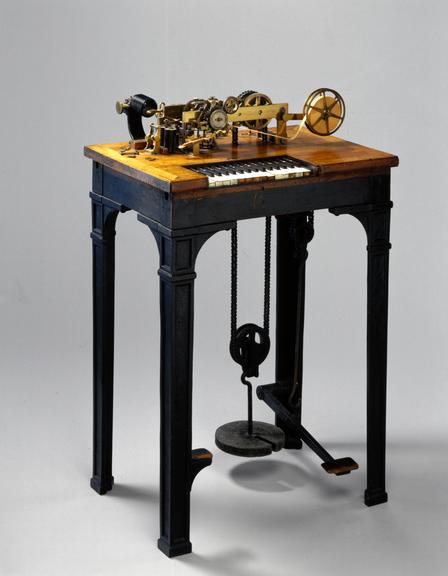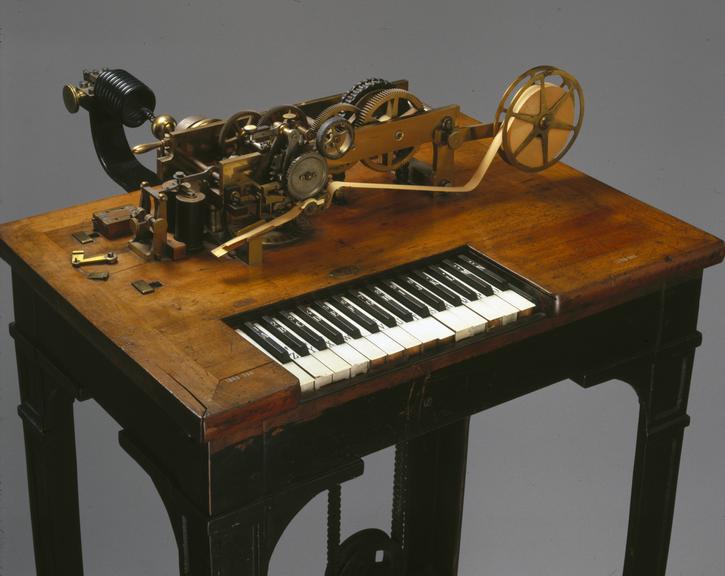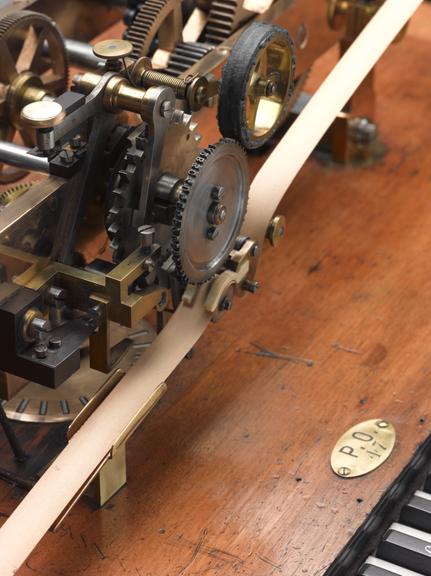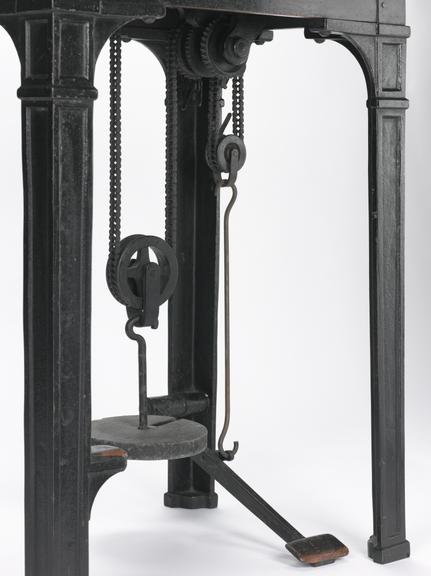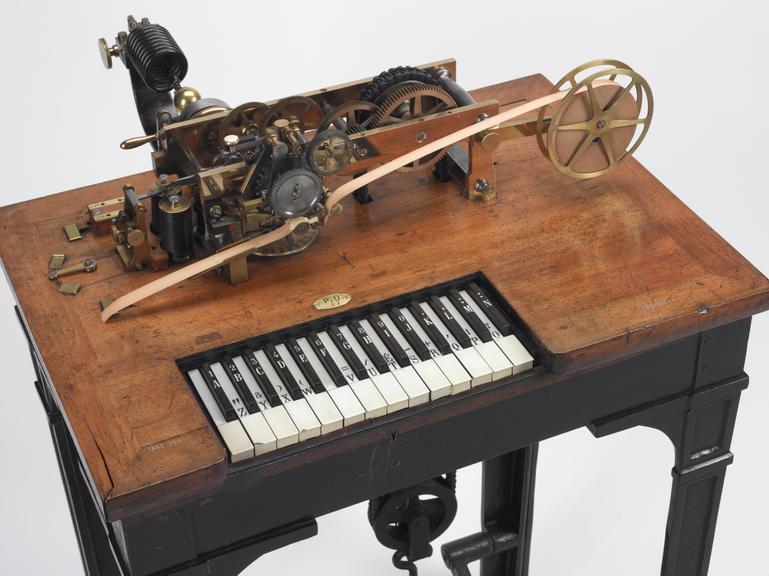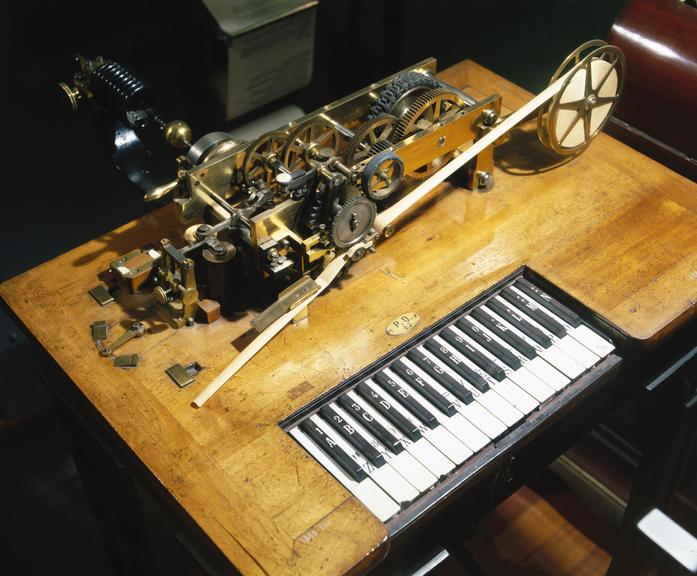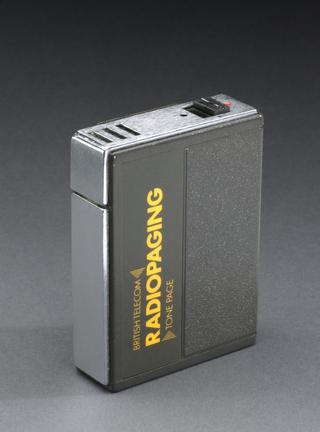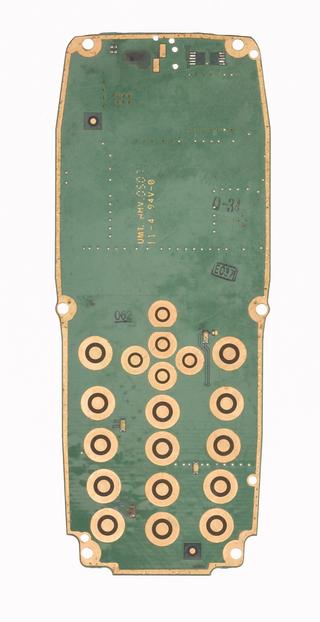Hughes' printing telegraph, 1860.
Hughes typewriting telegraph instrument, unknown maker, 1860. Invented about 1855 by David E Hughes (1829/31-1900), US patent numbers, 14,917, 1856; 22,531, 1859 and 22,770, 1859; British patent number 938, 1858.
More
Hughes typewriting telegraph instrument, unknown maker, 1860. Invented about 1855 by David E Hughes, US patent numbers, 14,917, 1856; 22,531, 1859 and 22,770, 1859; British patent number 938, 1858.
This telegraph receiver was invented by David E Hughes (1829/31-1900) around 1855. The transmitting and receiving machines were identical and worked in time with each other, working via clockwork. The pressing of any key causes a short electrical current to pass through the line and activate the receiver at the other end, which then recorded the character on a strip of paper. They keyboard was similar in appearance to that of a piano, with 14 white and 14 black keys.
The receiver of Hughes' telegraph contained a printing wheel which rotated in synchronism with the 'character wheel' at the transmitter. Characters were signalled by a single pulse, whose timing made the wheel print the right letter. First-class operators, who had to have a good touch and sense of rhythm, could work at 30 words per minute. Hughes' telegraphs were mostly used on submarine cables to Europe. The keyboard has 26 keys, similar in style to a piano, for the alphabet and some punctuation characters.
- Measurements:
-
overall: 1160 mm x 750 mm x 800 mm, 110kg
- Materials:
- cast iron , mahogany (wood) , brass (copper, zinc alloy) , steel (metal) , insulating material , lead (metal) , ivory , ebony and paper
- Object Number:
- 1888-396/1
- type:
- telegraph
- Image ©
- The Board of Trustees of the Science Museum











